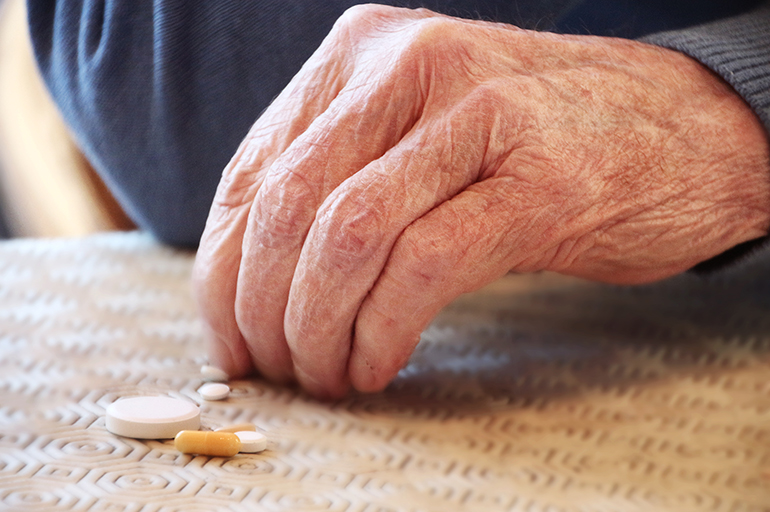AMA’s Task Force recently offered practical guidance to physicians on best measures to tackle this opioid epidemic.
Are you monitoring your patient’s opioid use? Remember, not keeping tabs on your patients’ opioid use could put you in line for some unwanted scrutiny.
Good news: To help reduce opioid abuse, the American Medical Association’s (AMA’s) Task Force recently offered guidance to physicians on best practice measures about the safe use, storage, and disposal of prescription opioids. “These new recommendations can further reduce the amount of unwanted, unused, and medications — making their diversion to nonmedical use much less likely,” explained Patrice A. Harris, MD, MA, chair of the AMA Board of Trustees and chair of the Task Force in an April 18, 2017 press release.

The recommendations encourage physicians to team up with their patients to eliminate issues associated with the wrong use of their prescription drugs. The three-part steps remind providers to:
- Talk to the patients about the consequences of sharing prescribed opioids.
- Make sure that patients know the precautions required to store this type of medication
- Teach patients about the legal disposal of opioid prescriptions
The association anticipates that these suggestions will give physicians some guideline to follow considering that opioid overuse went up by 150% in the last couple of decades, according to an Agency for Healthcare Research and Quality (AHRQ).
Study: A statistical brief from the AHRQ, published some time back, revealed surprising facts that every facility should know about opioid dependence, poisoning, and abuse in inpatients.
Background: Opioid overuse/abuse is a serious healthcare issue (in fact an epidemic) in the US. According to the US Department of Health and Human Services (HHS), the substantial rise in the misuse of opioids has led to an epidemic in overdoses.
This analysis is based on details in the Healthcare Cost and Utilization Project (HCUP) 1993-2012 Nationwide Inpatient Sample (NIS), and the data is based on the number of adult discharges in hospitals across 44 states.
Overuse included:
- Deliberate abuse of a prescription
- Taking a drug prescribed for other patients
- Taking the drug with alcohol
Question of illness
The AHRQ report also reflects an increase in the average number of secondary diagnosis codes documented in the discharge notes from 2.86 in 1993 gradually increasing to 7.93 in 2012. This bit of information is worth assessing to find out whether we are actually moving ahead to become an ailing community, whether our providers are documenting more diagnoses, or is it just about smarter reimbursement strategies?
Opioid diagnoses included
The study (conducted before ICD-10 became effective) used ICD-9-CM codes defining opioid overuse. It covered the 304 series with opioid dependence and opioid other dependence, whether it’s unspecified, continuous, episodic, or in remission.
ICD-10 has a clearer classification for the substance use and abuse codes. Coders will report the patient’s condition as “uncomplicated” if he does not have a current, acute manifestation of the use/abuse. For instance, she might go for F11.10 or F11.20 to describe opioid abuse or dependence.
Highlights of the Report
- The rate of hospital stays relating to opioid overuse among adults increased more than 150 percent between 1993 and 2012 – up from 116.7 to 295.6 stays per 100,000 population – an increase of 5% annually.
- In 1993, males had a higher rate of inpatient stays concerning opioid overuse compared to females (144.0 vs. 91.6 stays per 100,000). However, this gap decreased over time. Again, female inpatient stays witnessed a greater annual increase in opioid overuse of 6.3 as compared to 4.0 % for males.
- During 1993-2012, the average annual increase in hospital stays involving opioid overuse among adults was highest for adults aged 45-84 years at 8.9%.
- While the number of stays for opioid overuse billed to Medicaid decreased over time, the proportion billed to Medicare increased two-fold.
According to a more recent AHRQ report, opioid-related hospitalizations increased by 64 percent across the country between 2005 and 2014. But analysis shows that the trends vary widely among states. For instance, as per latest data available, states such as Georgia, North Carolina, Oregon, South Dakota and Washington reported that opioid-related stay increased by at least 60 percent between 2009 and 2014. However, Illinois, Kansas, Louisana, and Maryland witnessed decrease in opioid-related stays during the same period!
“These new data provide vital insights into the trends that are shaping one of the nation’s most pressing health challenges,” said AHRQ Director Andy Bindman, M.D.
What you need to do
Apart from following AMA’s recommendations, physicians need to tell patients about the risks associated with receiving painkillers from more than one provider. The greater the number of prescribes, the higher the risk of hospitalization.
Steps hospitals can take to curb overdose
- Screen patients’ record for a history of drug overdose
- Conduct an in-house survey to find out where your facility stands in terms of pain “over” management
- Disseminate info about the perils of over medication
- Advisory to give up ‘doctor shopping’
Heed this advice: According to Duane C. Abbey, Ph.D., president of Abbey and Abbey Consultants Inc., in Ames, IA, hospitals should work through their staff organizations to increase the sensitivity of physicians to this particular problem. They should study these statistics with care. Hospitals should in fact take measures to keep a tab on possible misuse in real time that is right at that point in which the misuse starts. But again, in most instances, the information that misuse is taking place will not be available until after the fact. Follow-up will then be critical for the hospital staff.
For more information visit SuperCoder

